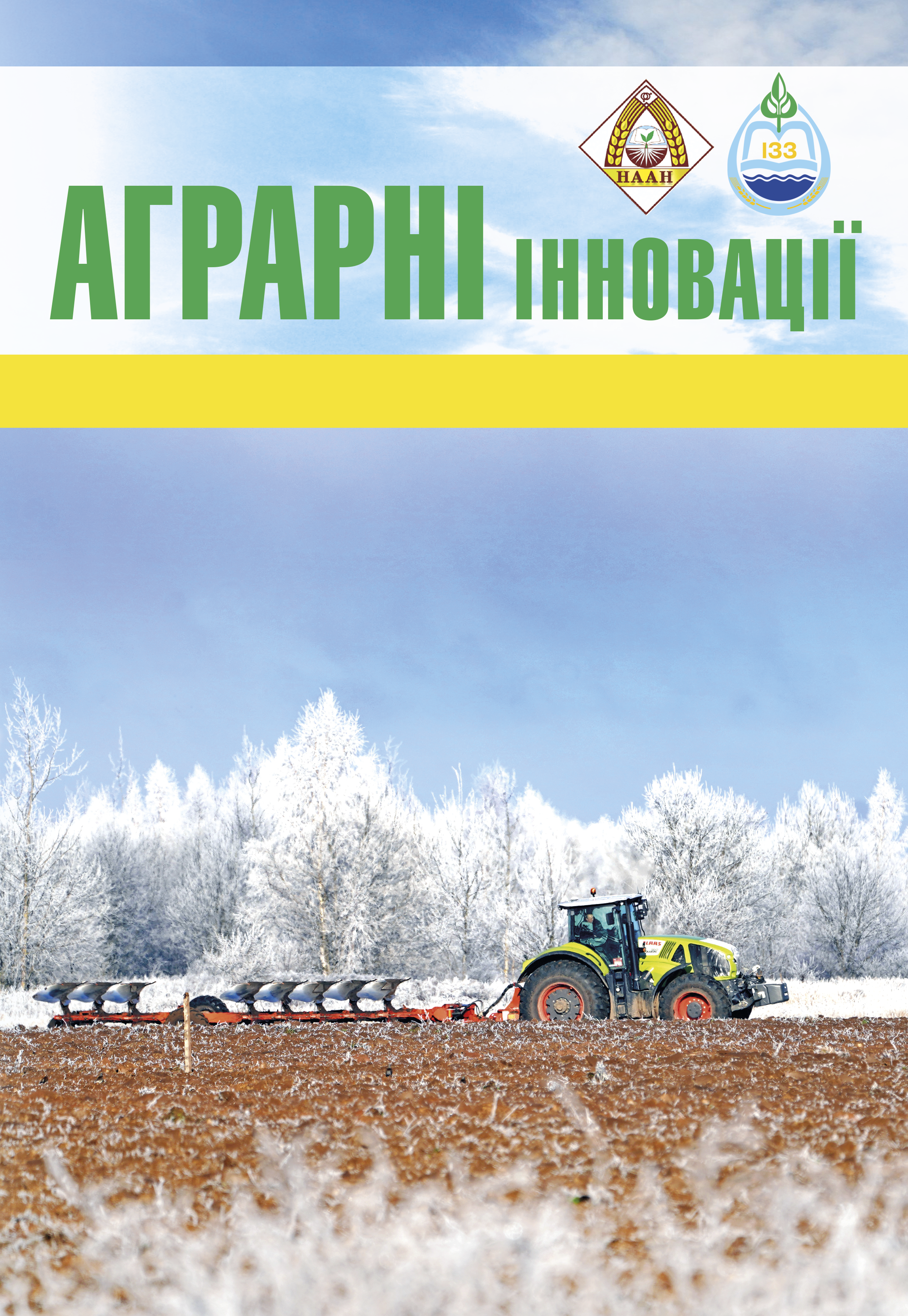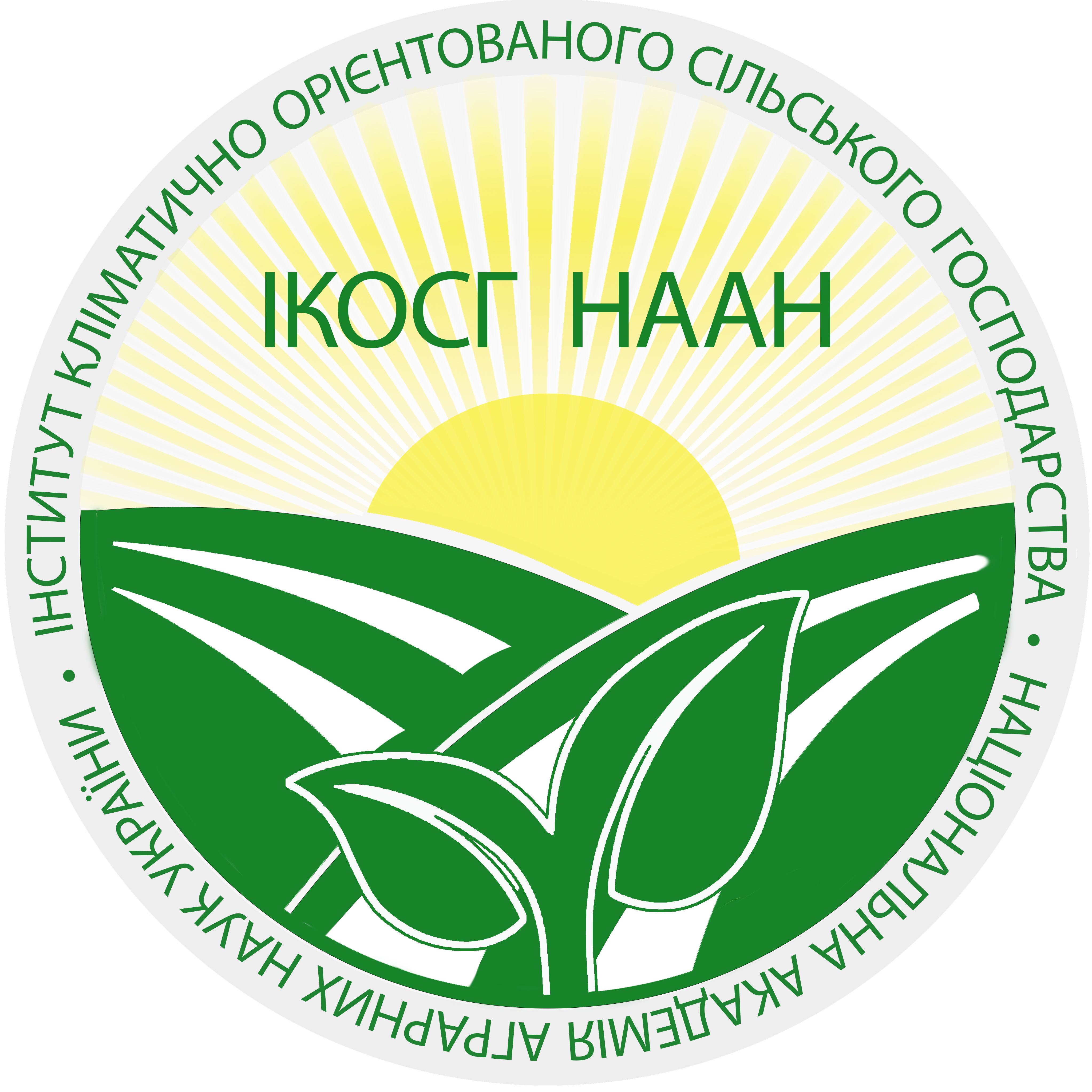Сортові особливості формування якості зерна нуту в умовах Лівобережного Лісостепу України
Анотація
Нут є цінною рослиною, яка забезпечує продукти харчування високої якості для зростаючого населення світу, і набуватиме дедалі більшого значення зі зміною клімату через його природну посухостійкість і здатність витримувати спекотні періоди. У той же час, це найважливіша продовольча бобова культура, яка культивується серед бобових прохолодної пори року в посушливих і напівпосушливих регіонах світу в умовах богарного живлення. Дана с.-г. культура містить 18 амінокислот, з яких 8 є незамінними. Нут має більший вміст жиру, золи та клітковини ніж сочевиця, квасоля та горох. Дослідження були спрямовані на вивчення особливостей формування вмісту білку, жиру та амінокислот в зерні нуту залежно від сортових особливостей в Лівобережному Лісостепу України. Вивчення хімічного складу сортів Аргумент, Адмірал, Буджак, Тріумф, Пам’ять, Красень, Іордан, Скарб, Одісей, Ярина проводили в умовах навчально-наукового полігону навчально-науково-виробничого комплексу (ННВК) Сумського національного аграрного університету впродовж 2020–2022 років. За результатами досліджень встановлено, що найбільш сприятливим для формування вмісту білка в зерні нуту серед досліджуваних років був 2020 рік, і в середньому вміст білка в зерні становив 21,82 %. На відміну від вмісту білка, найбільш олійним для нуту видався 2021 рік, де вміст жиру становив в середньому 7,49 %. Найбільший вміст: лізину (1,69 г/100 г), треоніну (1,08 г/100 г), валіну (0,91 г/100 г) фенілаланіну (1,55 г/100 г), аланіну (1,14 г/100 г), глутамінової кислоти (4,37 г/100 г), аргініну (2,25 г/100 г), гістидину (0,91 г/100 г) та тирозину (0,71 г/100 г) було сформовано сортом Красень. Найбільший вміст: метіоніну (0,27 г/100 г), ізолейцину (0,87 г/100 г), лейцину (1,63 г/100 г), аспарагінової кислоти (2,35 г/100 г) та серину (1,58 г/100 г) мало насіння сорту Пам’ять; проліну (0,97 г/100 г) – у сорту Тріумф.
Посилання
2. Boukid F. Chickpea (Cicer arietinum L.) protein as a prospective plant-based ingredient: A review. International Journal of Food Science & Technology. 2021. 56. Р. 5435–5444. https://doi.org/10.1111/ijfs.15046
3. Gaur, P. M., Samineni, S., Chibbar, R. N. Achievements and challenges in improving nutritional quality of chickpea. Legume Perspect. 2015. 9. Р. 31–33
4. Hertzler S.R., Lieblein-Boff J.C., Weiler M., Allgeier C. (2020). Plant proteins: assessing their nutritional quality and effects on health and physical function. Nutrients. 2020. 12 (12): 3704. https://doi.org/10.3390/nu12123704
5. Ipekesen S, Basdemir F, Tunc M, Bicer BT. Minerals, vitamins, protein and amino acids in wild Cicer species and pure line chickpea genotypes selected from a local population. J Elem. 2022. 27. Р. 127–40.
6. Janghel D. K., Kumar K., Sunil R., Chhabra A. K. Genetic diversity analysis, characterization and evaluation of elite chickpea (Cicer arietinum L.) genotypes. International Journal of Current Microbiology and Applied Sciences. 2020. vol. 9, no. 1, pp. 199–209. https://doi.org/10.20546/ijcmas.2020.901.023
7. Jukanti, A. K. Nutritional Quality and Health Benefits of Chickpea (Cicer Arietinum L.): A Review. British Journal of Nutrition. 2012. 108. Р. 11–26. https://doi.org/10.1017/S0007114512000797
8. Kaur K, Grewal SK, Gill PS, Singh S. Comparison of cultivated and wild chickpea genotypes for nutritional quality and antioxidant potential. J Food Sci Technol. 2019. 56:18. Р. 64–76 https://doi.org/10.1007/s13197-019-03646-4
9. Philip A Thacker, Shiyan Qiao, Vernon J Racz. A comparison of the nutrient digestibility of Desi and Kabuli chickpeas fed to swine Journal of the Science of Food and Agriculture. 2002. 82 (11). Р. 1312–1318 https://doi.org/10.1002/jsfa.1174
10. Singh N, Kaur S, Isono N, Noda T. Genotypic diversity in physico-chemical, pasting and gel textural properties of chickpea (Cicer arietinum L.). Food Chem. 2010. 122. Р. 65–73. https://doi.org/10.1016/j.foodchem.2010.02.015
11. Toker C. Cicer turcicum: A new Cicer species and its potential to improve chickpea. Front. Plant Sci. 2021. 12. 662891. https://doi.org/10.3389/fpls.2021.662891
12. Yegrem L. Nutritional composition, antinutritional factors, and utilization trends of Ethiopian chickpea (Cicer arietinum L.). International Journal of Food Science. 2021. 5570753. https://doi.org/10.1155/2021/5570753
13. Zhao, X, Sun, L, Zhang, X, Wang, M, Liu, H, and Zhu, Y. Nutritional components, volatile constituents and antioxidant activities of 6 chickpea species. Food Biosci. 2021. 41, 100964. https://doi.org/10.1016/j.fbio.2021.100964
14. Zia-Ul-Haq M., Iqbal S., Ahmad S., Imran M., Niaz A., Bhanger M.I., Nutritional and compositional study of Desi chickpea (Cicer arietinum L.) cultivars grown in Punjab, Pakistan. Food Chemistry. 2007. 105 (4). P. 1357–1368. https://doi.org/10.1016/j.foodchem.2007.05.004.
15. Баранник, Г. І. Особливості вирощування нуту в умовах Луганської області. Збірник матеріалів V Науково-практичної конференції студентів, магістрантів та аспірантів «Актуальні проблеми та наукові звершення молоді на початку третього тисячоліття». 19 листопада 2020 року. М. Слов’янськ, 2020. С. 34–35.
16. Вус Н. О., Безуглаc О. М., Кобизєва Л. Н. Мінливість вмісту білка у колекційних зразків нуту в умовах Східного Лісостепу України. Корми і кормо виробництво. 2016. 82. С. 34–38.
17. Вус Н. Вміст олії в насінні нуту (Cicer arietinum l.) В умовах східного Лісостепу України. Всеукраїнська науково-практична конференція чна конференція «Актуальні питання сучасних технологій вирощування сільськогосподарських культур в умовах змін клімату». Київ, 2017. С185–187.
18. Кобизєва, Л. Н.; Вус, Н. О. Актуальні напрями та досягнення світової селекції сортів нуту стійких до несприятливих біо- та абіотичних чинників. Селекція і насінництво. 2016. 110. С. 67–82. https://doi.org/10.30835/2413-7510.2016.87609
19. Логоша, О. В., Воробей, Ю. О., Усманова, Т. О., Стрекалов, В. М. Характеристика властивостей бульбочкових бактерій нуту, поширених в агроценозах Лісостепової та Степової зон України. Сільськогосподарська мікробіологія. 2019. 29. С. 21–28. https://doi.org/10.35868/1997-3004.29.21-28
20. Мазур, В. А., Ткачук, О. П., Дідур, І. М., Панцирева, Г. В. Обливості технології вирощування малопоширених зернобобових культур: монографія. Вінниця: Твори, 2021. 172с.
21. Пасічник, С. М.; Січкар, В. І. Біохімічні та технологічні якості колекційних зразків нуту. Селекція і насінництво. 2016. 110. С. 162–170.
22. Петкевич, З. З.; Мельніченко, Г. В. Нут, сочевиця-перспективні зернобобові культури для вирощування на півдні України. Зрошуване землеробство. 2016. 65. С. 104–107.






